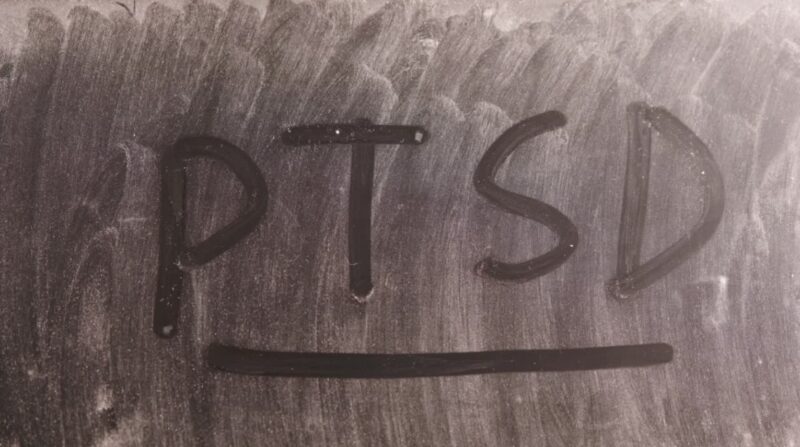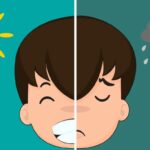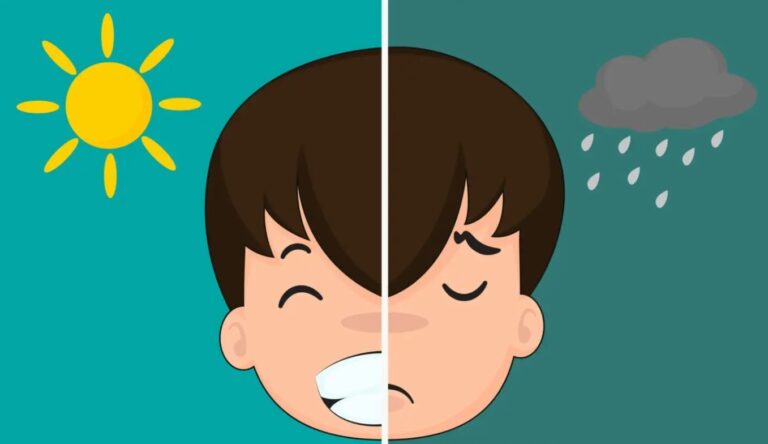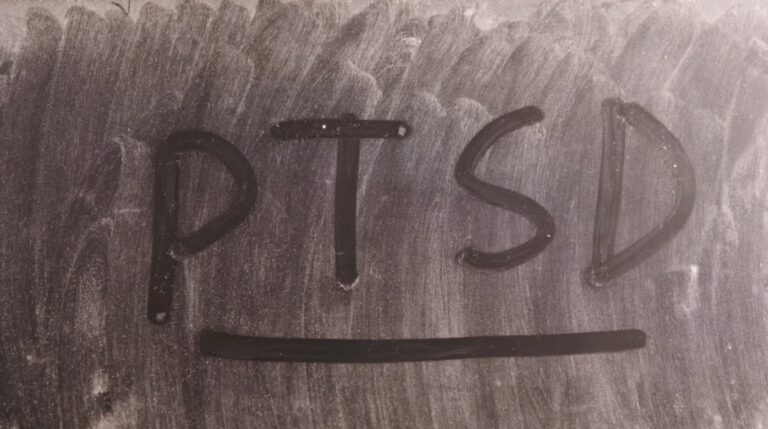For many people, life contains experiences that can deeply shake us – instances of violence, cruelty, accidents, or disasters beyond our control. While most are able to carry on with support from loved ones, for some these traumatic events trigger lasting psychological and emotional effects.
This is what we call Post-Traumatic Stress Disorder, or PTSD. Following a traumatic event, those suffering from PTSD may find themselves repeatedly reliving the experience through flashbacks or nightmares. Loud noises or situations reminiscent of the trauma can trigger panic, anxiety, and overwhelming distress. Loved ones may notice the survivor withdraw or has trouble feeling joy again.
PTSD impacts over 3% of Americans at some point in their lives. However, rates are even higher for those in roles like first responders, military service members, or survivors of injury, abuse or disasters. Children exposed to trauma are at high risk if not helped properly. Symptoms can manifest differently depending on the individual and circumstances of the trauma.
While there is no single path to recovery, treatments do exist to help people manage PTSD over the long term. Therapies give survivors tools and space to process what happened in a safe environment. Medications may aid in reducing distressing physical symptoms. With consistency and compassion, the effects of trauma gradually lose their power through healing experienced at each person’s own pace.
This overview aims to spread compassion for those affected by raising awareness of PTSD.
Common Causes of PTSD

Knowing the most common causes of PTSD can help recognize who might be at higher risk and offer help sooner.
Things That Can Lead to PTSD
- War Experiences: Soldiers and veterans who fought in wars often face some of the highest chances of PTSD. Constantly facing dangerous situations, seeing friends get hurt or die, and the stresses of battle can cause deep emotional scars. Studies show that between 1 in 10 and 1 in 5 Iraq and Afghanistan veterans, and 1 in 10 Gulf War vets deal with PTSD. (1)
- Experiencing Abuse as a Child: Kids who suffer physical, emotional, or sexual mistreatment have a much greater risk of developing PTSD later in life. This early trauma interrupts normal growth and can lead to lasting inner wounds. Survivors commonly struggle with trusting others, controlling feelings, and dealing with depression and anxiety. (2)
- Sexual Assault and Rape: These are among the primary causes, especially for women. Being violated and harmed in these ways can cause profound emotional distress. Around 94% of raped women feel the symptoms in the first two weeks after, and about 30% still have symptoms after nine months. (3)
- Enduring Physical Violence: Going through attacks or abuse can lead to PTSD, particularly if it involves bad injuries or feels life-threatening. This covers domestic violence and attacks by strangers. Victims often face ongoing fear, hyperawareness, and unease that interferes with daily life and relationships.
- Severe Accidents: Car crashes, work accidents, and other really serious incidents can be triggers. The suddenness and unpredictability of these events, combined with possible physical injuries, contribute to inner turmoil. Research finds that up to 1 in 4 people in very bad car accidents develop PTSD. (4)
- Witnessing Horrific Events: Seeing traumatic things happen to others, like someone getting badly hurt or killed, can also cause PTSD. This affects many first responders like police, firefighters, and medics. Even though they weren’t directly involved, witnesses can feel intense fright, helplessness, and horror leading to PTSD.
- Natural Disasters: Events like earthquakes, hurricanes, and floods can induce PTSD, especially when there is significant loss of life, homes, and security. The shared distress experienced by whole communities in these situations can result in widespread PTSD impacting many people.
- Other Contributing Factors: Getting diagnosed with a serious or terminal illness. The unexpected loss of a close family member or friend, especially violently or disturbingly.
Signs Someone Is Struggling with PTSD

Signs generally fall into four big categories:
- Flashbacks to the trauma
- Avoiding trauma reminders
- Negative changes in thinking and mood
- Changes in feelings and body reactions
- Flashbacks: The traumatic event replays over and over in their mind like they’re right back in it. These flashbacks feel super real and really distressing, involving what they saw, felt, heard during the original trauma.
- Troubling Dreams: Common for PTSD sufferers, these dreams about the trauma mess with their sleep and cause major anxiety.
- Distressing Memories: Unwanted, super painful memories of the trauma pop into their head, stirring up a lot of raw emotion and discomfort.
- Negative Beliefs: Persistent thoughts like, “Something bad will always happen” or “I’m worthless.”
- Blunted Feelings: Difficulty feeling close to others or enjoying life.
- Memories Are Blurry: Trouble recalling details of the trauma, as their brain copes.
- Hard to Feel Happy: Struggling with positive feelings and frequent feelings of fear, guilt or shame instead.
Risk Factors for PTSD
Risk factors generally fall into three time periods: before, during, and after the trauma.
Before the Event
- Genetics: Mental health issues running in the family can increase chances.
- Personality: Tendencies like stress-prone or negative outlook add risk.
- Early Experiences: Abuse or neglect as a kid has long-term impacts on the brain and the likelihood of PTSD later on.
- Past Issues: A history of anxiety, depression, or other troubles makes the effects of trauma harder to handle.
During the Trauma
- Severity and Length: More extreme, prolonged events heighten risk.
- Threat to Life: Feeling in direct danger, like at gunpoint, really ups PTSD chances.
- Harm: Physical injuries from accidents or attacks also play a role, along with pain and recovery straining the mind.
After the Traumatic Experience
- Lack of Support: Isolation without caring people to listen makes recovery tougher.
- Stress Pile-On: Money worries, relationship troubles, and other issues wear a person down.
- Coping Skills: Relying on alcohol, avoiding feelings, etc. causes more long-term problems.
- Access to Help: Getting timely, appropriate treatment makes a big difference but isn’t always possible.
PTSD Diagnosis

To determine if someone has post-traumatic stress disorder (PTSD), a doctor or therapist does a full evaluation. They look at the person’s experience, symptoms, and how it impacts daily living.
Diagnosis Criteria
- Experiencing Trauma: Directly going through or seeing something really traumatic like danger, injury, or assault. Or learning about it happening to someone close.
- Reliving Effects: At least one symptom of flashbacks, nightmares, getting super upset when reminded of it.
- Avoiding Reminders: Persistently steering clear of people, places, thoughts, or feelings tied to the trauma.
- Changes in Mood and Thinking: Two or more symptoms like trouble remembering, constantly feeling negative, and detachment from others.
- Altered Reactions: Two or more symptoms like anger, risk-taking, hypervigilance, big scare responses, or concentration/sleep issues.
- Long-Term Effects: Symptoms last more than a month and significantly get in the way of life.
Evaluation Tools
- In-Depth Interviews: Structured conversations to thoroughly get the whole story and assess symptoms.
- Self-Checks: Questionnaires where someone rates their own experience to flag possible PTSD.
- Additional Tests: Checking for related struggles like depression or anxiety that often come with PTSD.
Challenges
Symptoms overlap with other issues, so accuracy takes skill. People may downplay their experience due to stigma or complexity. Getting the full picture takes time and expertise.
Psychological Treatments

There are several types of treatments that can really help people manage their PTSD symptoms over time. The goal is to process what happened, reduce how it affects daily life, and feel better overall.
Cognitive Behavioral Therapy (CBT)
- Trauma-Focused CBT: Focused short-term therapy to work through specific needs after trauma. Involves gradually facing memories and reframing thoughts to lessen their emotional hold.
- Cognitive Processing Therapy: Focuses on changing negative thought patterns related to the trauma, which then changes upsetting responses.
- Prolonged Exposure: Slowly talking in detail about the trauma through imagination or situations that bring it to mind. Over time it helps face and reduce fear of memories.
- Eye Movement Desensitization and Reprocessing (EMDR): Works on memories while following stimuli with eyes. The theory is this dual focus helps the brain reprocess trauma, diminishing painful emotions. (5)
Other Therapies
Narrative Exposure: Creates a full life story including multiple traumatic events, integrating them. Helps after repeated trauma.
- Brief Eclectic Psychotherapy: Blends CBT with psychodynamic approaches like processing memories, changing beliefs, and working through grief.
- Group Therapy: Being with others who understand provides support and coping ideas, especially helpful for veterans and mass trauma survivors.
Complementary Approaches
- Mindfulness: Focuses present attention non-judgmentally through practices like meditation. Reduces symptoms through emotional regulation.
- Acupuncture: Inserts thin needles at specific points to relieve anxiety and stress. Potentially an added benefit but needs more research.
- Exercise: Yoga, walking, etc. counter stress through relaxation and physical wellbeing, with mental health benefits.
Pharmacological Treatments

In addition to therapy, prescription medication can help balance out PTSD symptoms like anxiety, depression and sleep issues. Doctors may suggest these alone or combined with talking treatments.
SSRIs & SNRIs
These “uptake inhibitors” basically increase happy brain chemicals like serotonin and sometimes norepinephrine too. SSRIs Zoloft and Paxil are FDA-approved for PTSD. SNRIs like Effexor also help mood and panic. Common side effects include tummy troubles and drowsiness.
TCAs
These older antidepressants work similar to SNRIs but have a different chemical makeup. While they can help, side effects like dry mouth and heart stuff make them less preferred nowadays unless other options don’t work out. (6)
Sleep Medicines
Prazosin specifically targets nightmares and restless sleep from PTSD. It reduces adrenaline’s effects at night for more Zzz’s. Dizziness may occur but usually gets better over time.
Stabilizers
Mood-balancing meds like epilepsy drugs Topamax and Lamictal can target anxiety, irritability, and outbursts in combo with other approaches, especially for bipolar-related PTSD. Watch for headaches and stomach problems.
Exploring New Avenues for Healing
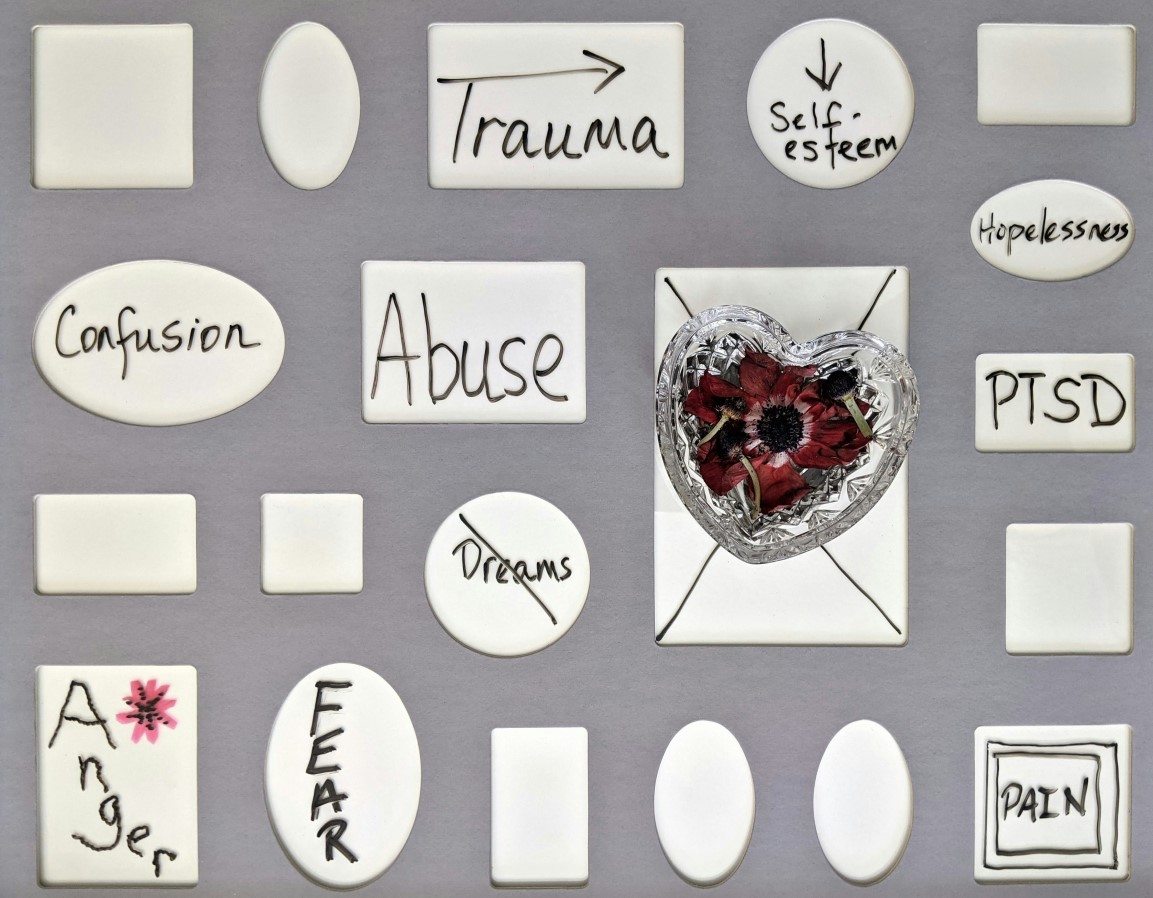
Scientists keep pushing the boundaries to learn more about what causes PTSD on deeper levels and test innovative treatment paths. Here are some promising areas of ongoing study.
The Body’s Own Cannabis
Our endocannabinoid system plays a role in stress and emotions. CBD oil and similar compounds may help balance this system’s effects to reduce anxiety, improve sleep and lessen traumatic memories. More research is underway on dosing guidelines. (7)
Therapy with Psychedelics
MDMA (ecstasy) appears to enhance openness during therapy, making trauma processing easier. Trials show it can eliminate PTSD for many. Magic mushrooms may also help through profound experiences that shift traumatic memory perspectives. But these remain experimental.
Brain Stimulation Techniques
TMS uses magnets to target mood-regulating brain areas, while tDCS employs mild electric currents. Both show the potential to alleviate stubborn PTSD symptoms through non-surgical methods. Guidelines are still being established. (8)
Biological Clues
Studying cortisol, inflammation, and genetic variations linked to stress responses may reveal valuable medical clues. Identifying biomarkers could aid early diagnosis and personalized treatment based on someone’s biology over time. (9)
Understanding the Blueprint
Mapping PTSD-related genes helps uncover its root causes at a DNA level. This paves the way for prevention strategies tailored to a person’s genetic profile. However, more diverse sampling is still needed.
Impact of PTSD on Physical Health
The constant stress takes a physical toll over time, increasing risks for many issues.
Heart Struggles
High alert levels and stress hormones like cortisol wear down the cardiovascular system. This links PTSD to higher chances of heart disease, strokes, and blood pressure issues. Especially when paired with bad health habits.
Stomach Distress
Chronic unease affects the gut-brain connection, frequently causing IBS and related digestive symptoms like cramps, bloating, and BMs. Ulcerative colitis may also be linked to PTSD.
Aches and Pains
Tight muscles, inflammation, and heightened pain perception contribute to chronic fibromyalgia and joint and back issues. Trauma histories often mean more of these conditions long-term.
Autoimmune Triggers
Stress dysregulates immunity, sparking inflammation elevation throughout the body. This primes the system for rheumatoid arthritis, lupus, and infections in general.
Prevention and Early Intervention
Some traumas simply can’t be prevented, but minimizing exposures where possible helps.
Supporting Each Other Through Trauma

When difficult things happen, coming together is so important. Reaching out right away and maintaining connections long-term helps us heal from life’s pains.
Reduce Harm, Increase Compassion
By addressing real safety issues and showing care for those in risky roles like first responders, communities can diminish traumatic experiences. Prevention comes through understanding each person’s humanity.
Share Strength, Not Shame
Open discussion brings PTSD into the light, so people know it’s normal to struggle at times and that accepting help makes us wiser, not weaker. Compassion grows as we recognize our common struggles.
Comfort in Crisis
In traumatic aftermaths like disasters, talking through feelings with empathetic listeners provides relief. Regular check-ins within support systems allow any troubles to surface early between trusted peers.
Heal Together, Heal Quicker
Proven therapies alongside loved ones’ care hasten recovery by empowering changed perspectives. Short-term aids sometimes smooth the path, but community walk it with us long-term.
Weaving a Safety Net
Family, friends, and community programs offer needed shoulders and helping hands. This engagement within a caring web strengthens our shared resilience against life’s difficulties down the road.
Last Words
The goal through all of this is to lend support to those experiencing trauma. It’s a complex issue with no simple solutions. But communities can make a difference by helping lighten others’ burdens step-by-step over time through real, on-the-ground assistance.
As long as that aid keeps coming through, there’s hope things will continue improving bit by bit.
References
- Kintzle S, Barr N, Corletto G, Castro CA. PTSD in U.S. Veterans: The Role of Social Connectedness, Combat Experience and Discharge. Healthcare (Basel). 2018 Aug 22;6(3):102. doi: 10.3390/healthcare6030102. PMID: 30131470; PMCID: PMC6164108.
- Powers A, Etkin A, Gyurak A, Bradley B, Jovanovic T. Associations Between Childhood Abuse, Posttraumatic Stress Disorder, and Implicit Emotion Regulation Deficits: Evidence From a Low-Income, Inner-City Population. Psychiatry. 2015;78(3):251-64. doi: 10.1080/00332747.2015.1069656. PMID: 26391833; PMCID: PMC4705548.
- Chivers-Wilson KA. Sexual assault and posttraumatic stress disorder: a review of the biological, psychological and sociological factors and treatments. Mcgill J Med. 2006 Jul;9(2):111-8. PMID: 18523613; PMCID: PMC2323517.
- Beck JG, Coffey SF. Assessment and treatment of PTSD after a motor vehicle collision: Empirical findings and clinical observations. Prof Psychol Res Pr. 2007 Dec;38(6):629-639. doi: 10.1037/0735-7028.38.6.629. PMID: 18509507; PMCID: PMC2396820.
- de Arellano MA, Lyman DR, Jobe-Shields L, George P, Dougherty RH, Daniels AS, Ghose SS, Huang L, Delphin-Rittmon ME. Trauma-focused cognitive-behavioral therapy for children and adolescents: assessing the evidence. Psychiatr Serv. 2014 May 1;65(5):591-602. doi: 10.1176/appi.ps.201300255. PMID: 24638076; PMCID: PMC4396183.
- Davidson J. Vintage treatments for PTSD: A reconsideration of tricyclic drugs. Journal of Psychopharmacology. 2015;29(3):264-269. doi:10.1177/0269881114565143
- Steardo L Jr, Carbone EA, Menculini G, Moretti P, Steardo L, Tortorella A. Endocannabinoid System as Therapeutic Target of PTSD: A Systematic Review. Life (Basel). 2021 Mar 9;11(3):214. doi: 10.3390/life11030214. PMID: 33803374; PMCID: PMC8000573.
- Flavia Venetucci Gouveia, Benjamin Davidson, Ying Meng, Darryl Christopher Gidyk, Jennifer S. Rabin, Enoch Ng, Agessandro Abrahao, Nir Lipsman, Peter Giacobbe, Clement Hamani, Treating Post-traumatic Stress Disorder with Neuromodulation Therapies: Transcranial Magnetic Stimulation, Transcranial Direct Current Stimulation, and Deep Brain Stimulation, Neurotherapeutics, Volume 17, Issue 4, 2020, Pages 1747-1756, ISSN 1878-7479.
- Banerjee SB, Morrison FG, Ressler KJ. Genetic approaches for the study of PTSD: Advances and challenges. Neurosci Lett. 2017 May 10;649:139-146. doi: 10.1016/j.neulet.2017.02.058. Epub 2017 Feb 24. PMID: 28242325; PMCID: PMC5470933.
Related Posts:
- What is Schizoaffective Disorder? Causes, Symptoms,…
- What is Bipolar Disorder? Causes, Symptoms, and Treatment
- Art Therapy for Post-Traumatic Stress Disorder
- What is Anxiety? Causes, Symptoms, and Treatment
- What Is Depression? Causes, Symptoms, and Treatment
- What is Schizophrenia? Causes, Symptoms, and Treatment

